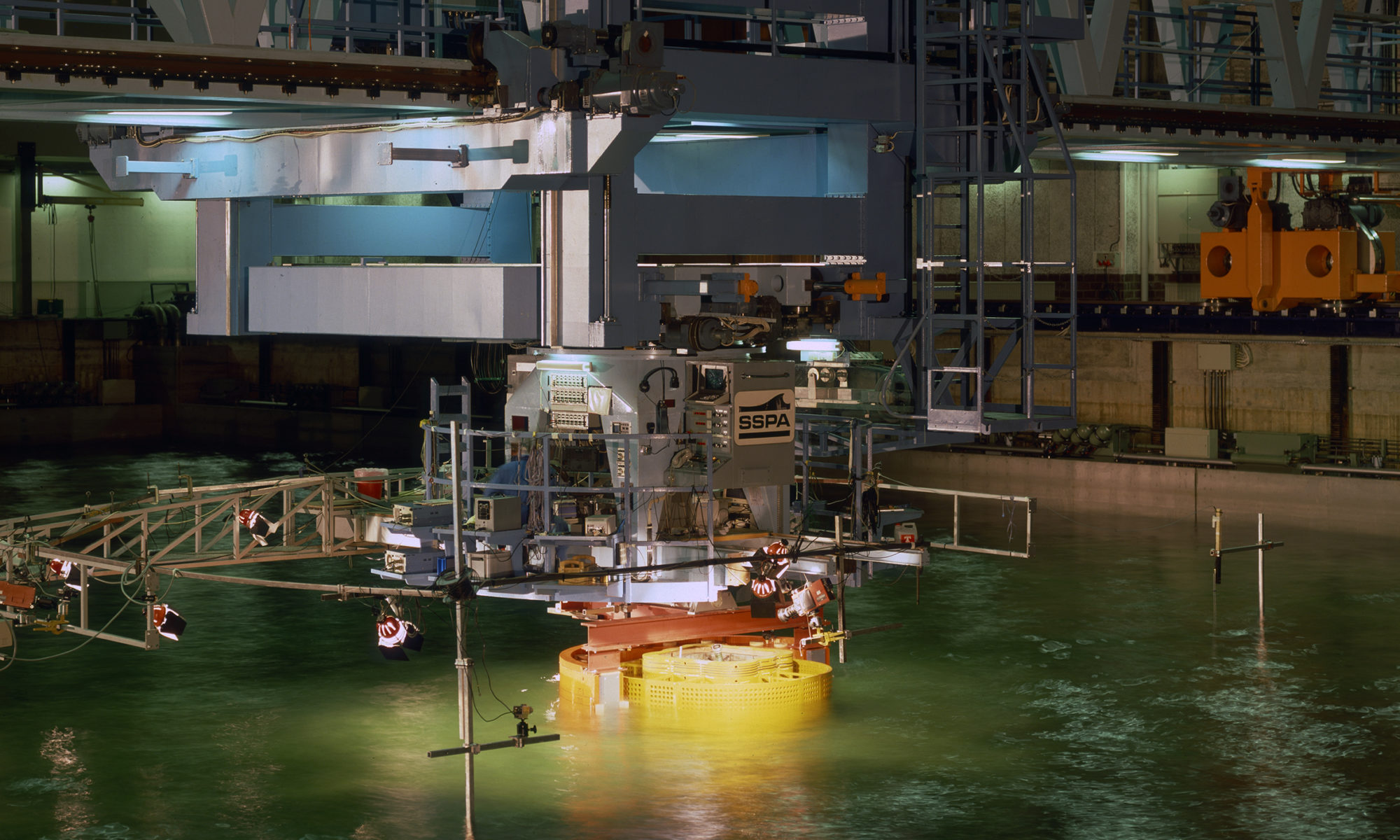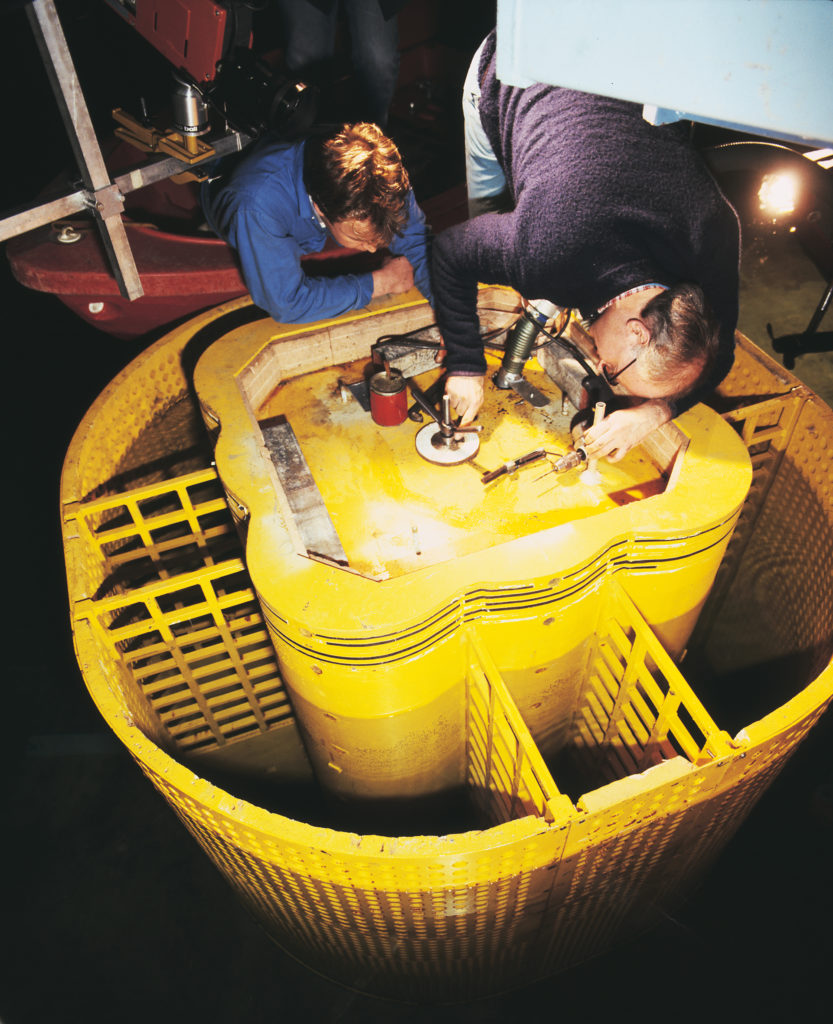Building the breakwater

A major jacking operation extended the platform legs in the Ekofisk Centre by six metres. But the Ekofisk tank could not be raised in this way, and its reduced freeboard represented a safety hazard.

To avoid this structure being washed over by powerful waves, it was decided to build a breakwater around it. A model was tested in waves at Gothenburg’s ship model tank.
The construction contract was awarded to Peconor rather than Norwegian Contractors, which had enjoyed a virtual monopoly of concrete structures for the North Sea oil industry. Peconor hastily expanded its organisation with 200 engineers at premises in Sandviken outside Oslo.
Once the design drawings were completed, the 20-metre-tall base section was cast in the Netherlands. This 27 000-tonne structure was towed on a purpose-built ship to Peconor’s facility in the Ål Fjord outside Haugesund for completion.
After 1 300 people had been employed on the slipforming job over the next six months, the breakwater was ready for towout in June 1989.
The actual voyage out took a week. Positioning the structure was the most critical phase, but all went well and the eastern half could be winched into position on 24 June.
Seawater injected into the Ekofisk reservoirWaterflooding phase II
